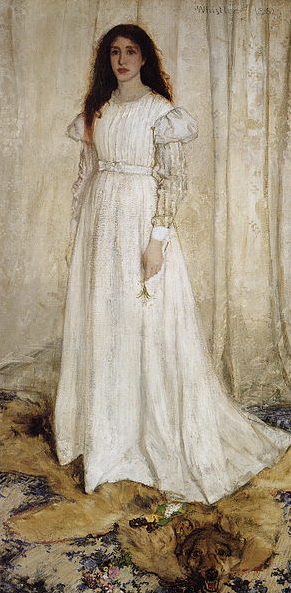Zinc White (zinc oxide,PW4) and was developed in the late 18th century. It is translucent, about 5 times less then Titanium white, has a low tinting strength. Zinc is much cooler then titanium.
Titianuim White (titanium dioxide,PW6) is probably the most well-known and widely used white oil paint today. Titanium is a very opaque and stiff white. It also is very powerful in its tinting strength, which can wash out colors it is mixed with. Titanium white is somewhat cool in color but not as cool as Zinc White.
Most all paint manufactures tubes of Titanium white contain Zinc White. Adding Zinc white to Titanium makes it more viscous, allows more flow, and lessens its tinting strength. Adding Zinc to titanium also makes a more permanent paint film.
Titanium White has approximately twice the covering power of Lead White and is very stable. By 1945 it accounted for more then 80% of the market.
Lead White (basic lead carbonate PW1 ) the oldest of the three types of white, around 400 B.C. Almost all Oil painters used Lead White before 1916 when Titanium white was developed. Lead white dries the fastest of all whites and is very dense and warm. It is structurally the strongest white and is almost always mixed with zinc white.
Lead white is very dangerous and should not be eaten or come in contact with your skin or eyes just like most of the oil colors we use to paint with. James Abbott McNeill Whistler (1834-1903) became sick from lead poisoning while painting “Symphony in White”.
Unbleached or Titanium Buff is Titanium dioxide processed differently then Titanium white. Buff titanium is made from titanium pigment (PW6) heated to high temperatures with a larger pigment particle size; this shifts the color toward a grayed, pale coffee brown. Not all paint manufactures produce titanium buff this way some such as Utrecht add Zinc White (PW4) and Raw Umber (pbr7) to titanium white.
